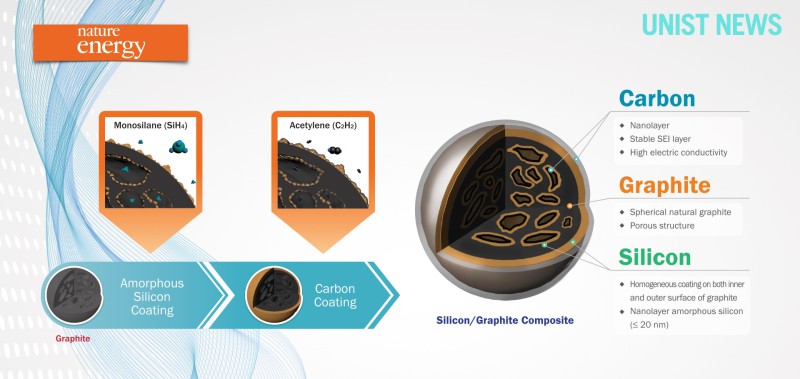
Cross-sectional schematic view showing the detailed structural characteristics of a SGC hybrid particle.
A team affiliated with Ulsan National Institute of Science and Technology (UNIST), South Korea, claims to have made yet another step towards finding a solution to accelerate the commercialization of silicon anode for Lithium-ion batteries. A new approach developed by a team led by Prof. Jaephil Cho could hold the key to greatly improving the performance of lithium-ion batteries.
Prof. Cho and his team have developed a new type anode material that would be used in place of a conventional graphite anode, which they claim will lead to lighter and longer-lasting batteries for everything from personal devices to electric vehicles...
Read More









Recent Comments